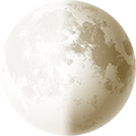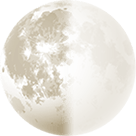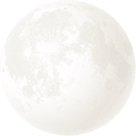What to see in October Night Sky (2022)What to see in the October night sky including Moon phases, a partial solar eclipse, planet guide, the Draconid and Orionid Meteor Showers and October Deep Space Objects.
October Moon Phases
October's full moon is called Hunter's moon. October is the preferred month to hunt summer-fattened deer and foxes unable to hide in bare fields. Like the harvest moon, the hunter's moon is also particularly bright and long in the sky, allowing hunters to stalk prey at night. Other names include the travel moon and the dying grass moon.
Full Moon and New Moon for October 2022

October 2022 First QuarterMon 3rd Oct

October 2022 Full MoonMon 10th Oct

October 2022 Last QuarterTue 18th Oct

October 2022 New MoonWed 26th Oct
Notable Events in October
On October 25th we get to witness a partial solar eclipse. A partial solar eclipse occurs when the Moon covers only a part of the Sun. A partial solar eclipse can only be safely observed with a special solar filter or by looking at the Sun's reflection. This partial eclipse will be best seen in parts of western Russia and Kazakhstan. It will be best seen from central Russia with over 80% coverage.
The UK will see only a small part of the eclipse. The eclipse starts (first contact) in the UK at 09:05 UT / 10:05 BST with maximum occurring at 09:57 UT / 10:57 BST and last contact at 10:49 UT / 11:49 BST. NASA Map and Eclipse Information .
October Planets
Mercury is an elusive planet due to its proximity to the Sun. On October 25th it reaches its greatest distance from the Sun allowing it to be seen with the naked eye in the pre-dawn twilight. It will be low over the eastern horizon about 30 minutes before sunrise.
Venus returns to the evening sky, in the west at dusk from Early October through the end of December.
From mid-October, Mars returns to the evening sky until the end of December.
Jupiter is a splendid object visible in the southern sky as soon as darkness falls. Using higher magnifications you will see the yellowish flattened disc and the four Galilean satellites. You should be able to follow the movement of these moons from night to night. It will be visible in the mornings from January to May, evenings from May to November, and mornings again from mid-December to the end of December.
Saturn is visible in the mornings from late January to early July, and then in the evenings from July to December.
October Meteor Showers
The Draconids Meteor Shower is a minor meteor shower producing only about 10 meteors per hour. It is produced by dust grains left behind by comet 21P Giacobini-Zinner, which was first discovered in 1900. The Draconids is an unusual shower in that the best viewing is in the early evening instead of early morning like most other showers. The shower runs annually from October 6-10 and peaks this year on the night of the 7th. The first quarter moon will block out all but the brightest meteors this year. If you are patient, you may still be able to catch a few good ones. The best viewing will be in the early evening from a dark location far away from city lights. Meteors will radiate from the constellation Draco, but can appear anywhere in the sky.

The Orionids is an average shower producing up to 20 meteors per hour at its peak. It is produced by dust grains left behind by comet Halley, which has been known and observed since ancient times. The shower runs annually from October 2 to November 7. It peaks this year on the night of October 21 and the morning of October 22. The thin, crescent moon will leave mostly dark skies for what should be a good show. The best viewing will be from a dark location after midnight. Meteors will radiate from the constellation Orion, but can appear anywhere in the sky.

October Deep Space Objects
As the warm nights of summer give way to crisp autumnal evenings, there are plenty of autumn-deep sky objects to see in the night skies. We take a look at some of the top sights to see during autumn.
M22 is the third brightest star cluster visible in the northern hemisphere and is known to contain at least 75,000 stars. Its low altitude means that it is often overlooked, but at magnitude +5.1, it is a naked-eye object and a fine target for small telescopes. It is fairly easy to see in the low southern skies in the constellation of Sagittarius, approximately halfway from Nunki to µ Sgr. M28 lies nearby, and although lower again
The Andromeda Galaxy (M31) and Triangulum Galaxy (M33) are the real showpieces of the autumnal skies. Both are visible to the naked eye from dark sky sights, and both fine binocular targets. A small telescope will show M31's satellite galaxies M32 and M110, as well as the galaxies' dust lanes.
You can find M33 by following the line from the star Mirach to Upsilon Andromedae, and extending it about the same distance in a straight line.
M33 can be found just less than two-thirds of the way between the stars Hamal in Aries, and Mirach in Andromeda. Through a small telescope, it will appear as a faint, oval-shaped patch of light, while larger telescopes should be able to pick out more detail under dark skies.











